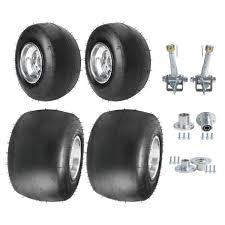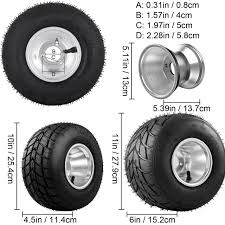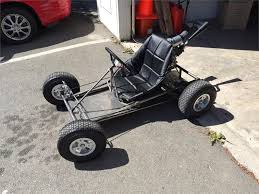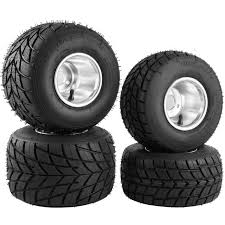The Essential Guide to Go-Kart Wheels: Enhancing Your Racing Performance
In the competitive world of go-kart racing, every component of your kart plays a crucial role in determining your performance on the track. Among these, the wheels are of paramount importance, directly influencing your kart’s speed, handling, and overall dynamics. Whether you’re a seasoned racer or just starting, understanding the intricacies of go-kart wheels can give you a significant edge over your competition.
Types of Go-Kart Wheels: Aluminum vs. Magnesium

Go-kart wheels are typically made from two primary materials: aluminum and magnesium. Each material has its advantages and specific use cases, depending on racing conditions and personal preference.
- Aluminum Wheels: Traditionally, aluminum was the go-to material for go-kart wheels. These wheels are known for their durability and affordability, making them a popular choice for beginners and in specific racing conditions, such as wet or cold weather. Aluminum wheels are slightly heavier than magnesium, which can be beneficial in situations where additional weight helps with traction, particularly in four-cycle karting.
- Magnesium Wheels: In recent years, magnesium wheels have become the standard in two-cycle sprint kart racing. Although they are more expensive and brittle compared to aluminum, their benefits are significant. Magnesium wheels are approximately 40% lighter than aluminum, reducing the rotating mass, which allows for quicker acceleration. Their rigidity enhances handling, and their superior heat dissipation maintains consistent tire temperatures, ensuring stable performance throughout the race.
Why Wheel Choice Matters

Selecting the right wheels for your go-kart is crucial for optimizing on-track performance. The choice between aluminum and magnesium wheels can impact various aspects of your racing, including:
- Weight and Acceleration: The reduced weight of magnesium wheels allows for better acceleration, which is crucial in high-speed racing scenarios. The lighter the wheels, the less energy is required to get them moving, giving you a quick burst off the start line and out of corners.
- Handling and Grip: The rigidity of magnesium wheels improves handling characteristics, offering more precise control, especially in tight corners. Aluminum wheels, being slightly more flexible, can provide additional grip in specific conditions, making them suitable for tracks where traction is a priority.
- Heat Management: Magnesium’s ability to dissipate heat efficiently means that tires mounted on magnesium wheels maintain a more consistent temperature and pressure. This consistency is vital for long races, where tire performance can degrade due to heat buildup.
Wheel Design and Its Impact on Performance

Beyond the material, the design of go-kart wheels also plays a significant role in performance. Key design factors include:
- Offset and Backspacing: The offset and backspacing of a wheel determine how it fits onto the kart and how it interacts with the track surface. Greater backspacing increases the wheel’s rigidity, which can enhance grip during acceleration phases in corners. However, too much grip can lead to overheating and cause the kart to slide, so finding the right balance is key.
- Bolt Pattern and Air Volume: These factors influence the wheel’s compatibility with your kart and how it affects the overall setup. The air volume within the wheel can also impact tire pressure and temperature, further affecting grip and handling.
- Spoke Design: The design of the spokes can alter the rigidity of the wheel. Longer spokes generally provide more flexibility, which can be advantageous in certain racing conditions where additional traction is needed, such as in shifter karts that require more traction during cornering.
How to Choose the Right Go-Kart Wheels
When selecting go-kart wheels, it’s essential to consider your specific racing needs:
- Track Conditions: If you frequently race in wet or cold conditions, aluminum wheels might be more suitable due to their ability to provide extra grip. For dry, fast tracks, magnesium wheels are typically preferred for their light weight and heat management properties.
- Kart Type: Different karts, such as shifter karts, have unique requirements. Shifter karts, with their higher power output, benefit from the added traction provided by magnesium wheels with specific design features like increased backspacing.
- Budget: Magnesium wheels are more expensive than aluminum ones. While they offer superior performance in many areas, the investment may not be necessary for all racers, especially those just starting out or racing in less competitive environments.
Conclusion
Choosing the right go-kart wheels is more than just picking a material—it’s about understanding how different factors like weight, rigidity, and heat dissipation affect your kart’s performance on the track. Whether you opt for the traditional aluminum wheels or the modern magnesium variants, making an informed decision will help you optimize your racing strategy and achieve better results. By considering your specific racing conditions and kart setup, you can select the perfect wheels to give you the competitive edge you need.




